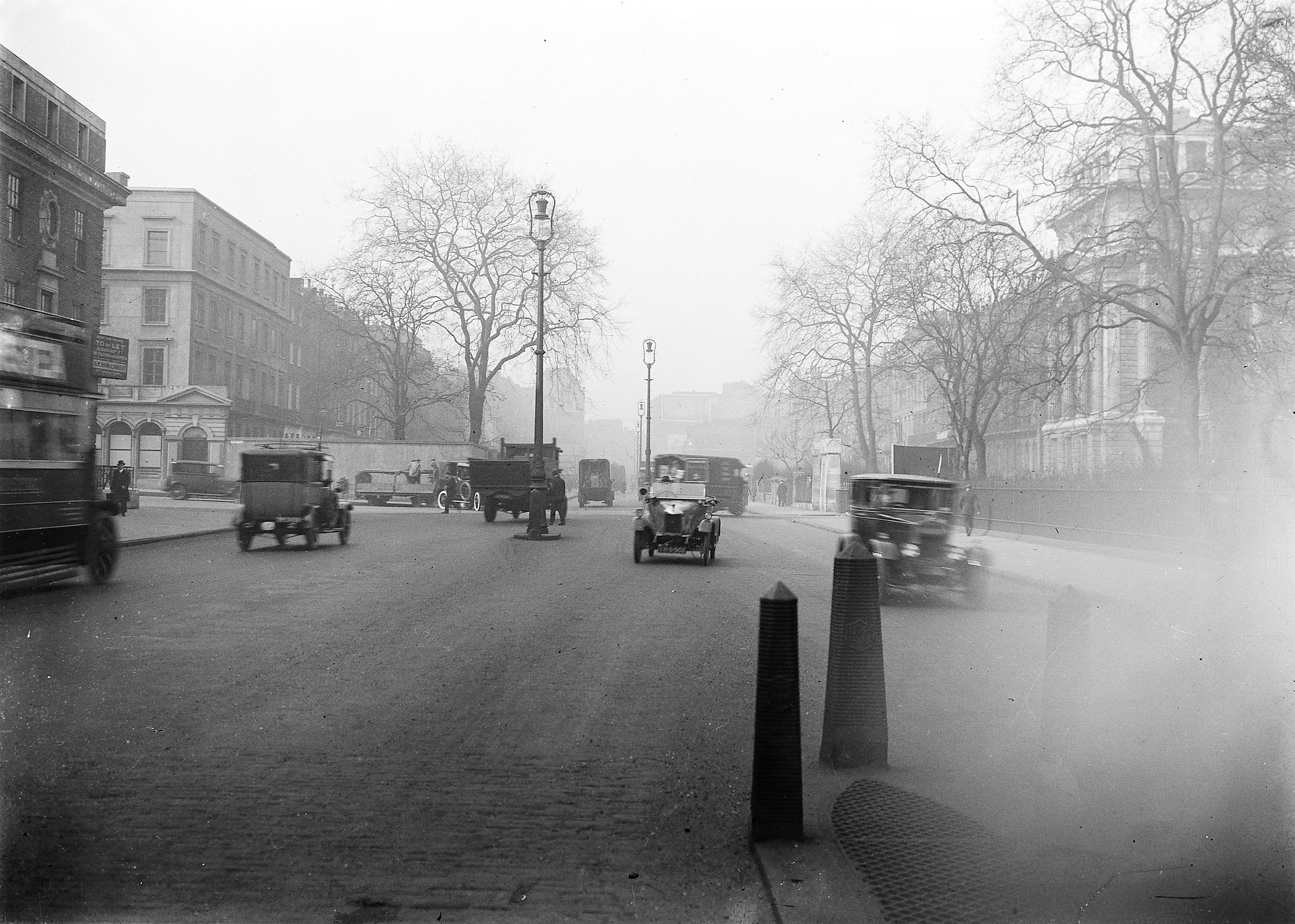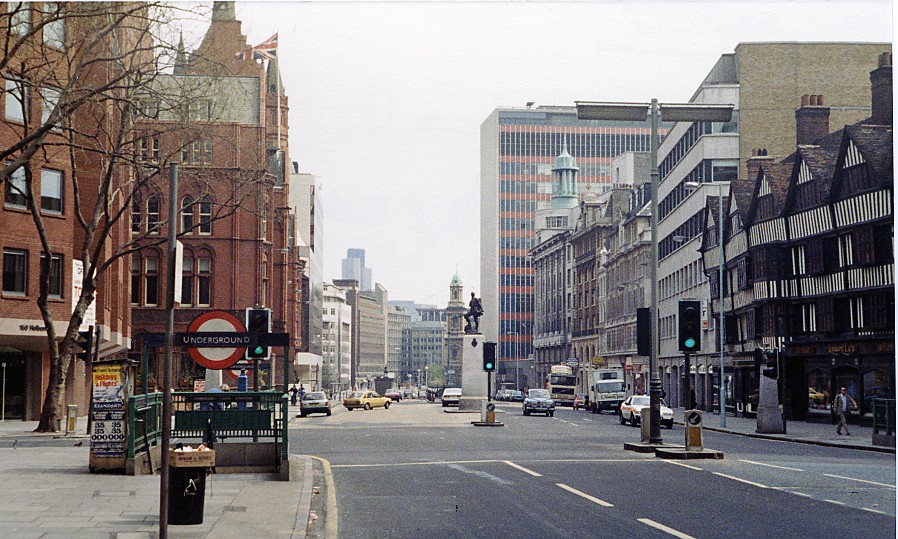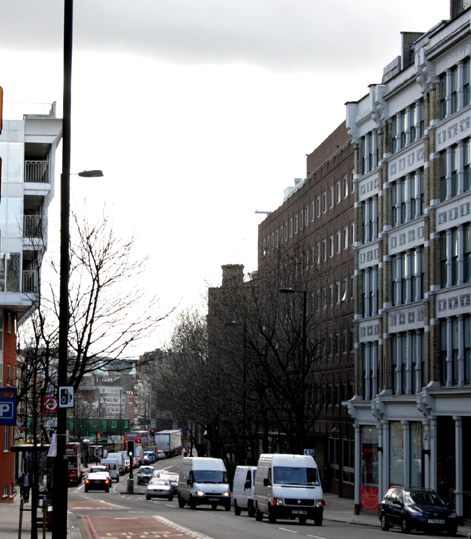|
Holborn And Covent Garden (ward)
Holborn and Covent Garden is a ward of the London borough of Camden, in the United Kingdom. As the name suggests, it covers the parts of Holborn and Covent Garden that lie in Camden; the eastern part of Holborn lies in the City of London and the southern part of Covent Garden lies in the City of Westminster. For elections to Parliament, Holborn and Covent Garden is part of Holborn and St Pancras. The ward lies in the far south of the borough, and is one of three wards of Camden south of Euston Road (along with Bloomsbury and King's Cross). It is separated from Bloomsbury by New Oxford Street, Bloomsbury Street, Great Russell Street, and Southampton Row; from King's Cross by Guilford Street and Calthorpe Street; from the borough of Islington by Phoenix Place, Warner Place, Herbal Hill, Clerkenwell Road, and Farringdon Road; from the City of London by Charterhouse Street, High Holborn, and Chancery Lane; and from the City of Westminster by Carey Street, Serle Street, ... [...More Info...] [...Related Items...] OR: [Wikipedia] [Google] [Baidu] |
Electoral Ward
A ward is a local authority area, typically used for electoral purposes. In some countries, wards are usually named after neighbourhoods, thoroughfares, parishes, landmarks, geographical features and in some cases historical figures connected to the area (e.g. William Morris Ward in the London Borough of Waltham Forest, England). It is common in the United States for wards to simply be numbered. Origins The word “ward”, for an electoral subdivision, appears to have originated in the Wards of the City of London, where gatherings for each ward known as “wardmotes” have taken place since the 12th century. The word was much later applied to divisions of other cities and towns in England and Wales and Ireland. In parts of northern England, a ''ward'' was an administrative subdivision of a historic counties of England, county, very similar to a hundred (country subdivision), hundred in other parts of England. Present day In Australia, Canada, New Zealand, Sri Lanka, South Afr ... [...More Info...] [...Related Items...] OR: [Wikipedia] [Google] [Baidu] |
Euston Road
Euston Road is a road in Central London that runs from Marylebone Road to King's Cross. The route is part of the London Inner Ring Road and forms part of the London congestion charge zone boundary. It is named after Euston Hall, the family seat of the Dukes of Grafton, who had become major property owners in the area during the mid-19th century. The road was originally the central section of New Road from Paddington to Islington which opened in 1756 as London's first bypass. It provided a route along which to drive cattle to Smithfield Market avoiding central London. Traffic increased when major railway stations, including Euston, opened in the mid-19th century and led to the road's renaming in 1857. Euston Road was widened in the 1960s to cater for the increasing demands of motor traffic, and the Euston Tower was built around that time. The road contains several significant buildings including the Wellcome Library, the British Library and the St Pancras Renaissance L ... [...More Info...] [...Related Items...] OR: [Wikipedia] [Google] [Baidu] |
Lincoln's Inn Fields
Lincoln's Inn Fields is the largest public square in London. It was laid out in the 1630s under the initiative of the speculative builder and contractor William Newton, "the first in a long series of entrepreneurs who took a hand in developing London", as Sir Nikolaus Pevsner observes. The original plan for "laying out and planting" these fields, drawn by the hand of Inigo Jones, was said still to be seen in Lord Pembroke's collection at Wilton House in the 19th century, but its location is now unknown. The grounds, which had remained private property, were acquired by London County Council in 1895 and opened to the public by its chairman, Sir John Hutton, the same year. The square is today managed by the London Borough of Camden and forms part of the southern boundary of that borough with the City of Westminster. Lincoln's Inn Fields takes its name from the adjacent Lincoln's Inn, of which the private gardens are separated from the Fields by a perimeter wall and a large ga ... [...More Info...] [...Related Items...] OR: [Wikipedia] [Google] [Baidu] |
Chancery Lane
Chancery Lane is a one-way street situated in the ward of Farringdon Without in the City of London. It has formed the western boundary of the City since 1994, having previously been divided between the City of Westminster and the London Borough of Camden. The route originated as a 'new lane' created by the Knights Templar from their original 'old Temple' on the site of the present Southampton Buildings on Holborn, in order to access to their newly acquired property to the south of Fleet Street (the present Temple) sometime before 1161. Chancery Lane, numbered the B400 in the British road numbering scheme, connects Fleet Street at its southern origin with High Holborn. It gives its name to Chancery Lane Underground station which lies at the junction of Holborn and Gray's Inn Road, a short distance from Chancery Lane's northern end. Historically, the street was associated with the legal profession, an association which continues to the present day; however, consulting firms, a ... [...More Info...] [...Related Items...] OR: [Wikipedia] [Google] [Baidu] |
High Holborn
High Holborn ( ) is a street in Holborn and Farringdon Without, Central London, which forms a part of the A40 route from London to Fishguard. It starts in the west at the eastern end of St Giles High Street and runs past the Kingsway and Southampton Row, becoming Holborn at its eastern junction with Gray's Inn Road. The western stretch as far as Drury Lane, was formerly known as Broad Street. On High Holborn, traffic (including cycles and buses) flows one-way westbound from its junction with Drake Street to its western end, and flows both ways for the remainder. The nearest London Underground stations are Tottenham Court Road, Holborn, and Chancery Lane, all on the Central line which runs beneath High Holborn. Landmarks along High Holborn include the Cittie of Yorke, at no. 22, and the Embassy of Cuba, at no. 167. The street was a "Feature site" for introduction of the Camden bench. High Holborn is the highest point in the City of London. At 22 metres (72 feet) above s ... [...More Info...] [...Related Items...] OR: [Wikipedia] [Google] [Baidu] |
Charterhouse Street
Charterhouse Street is a street on the north side of Smithfield in the City of London. The road forms part of the City’s boundary with the neighbouring London Boroughs of Islington and Camden. It connects Charterhouse Square and Holborn Circus, crossing Farringdon Road and running along a number of historical sites, including Smithfield Market. The nearest London Underground stations are Barbican near the east end of Charterhouse Street and Farringdon further west. Farringdon station also provides a connection to Crossrail and Thameslink rail services. Notable buildings Current Several gastropubs line the street, including the Fox and Anchor. The formerly- DJ Mag #1 club Fabric nightclub is located at No. 77A. Charterhouse Street is also the home of a 31 MWe combined heat and power plant operated by Citigen ( E.ON) and located within and beneath the former PLA cold store. De Beers International diamond corporation De Beers has been headquartered at No. 17 ... [...More Info...] [...Related Items...] OR: [Wikipedia] [Google] [Baidu] |
Farringdon Road
Farringdon Road is a road in Clerkenwell, London. Route Farringdon Road is part of the A201 route connecting King's Cross to Elephant and Castle. It goes southeast from King's Cross, crossing Rosebery Avenue, then turns south, crossing Clerkenwell Road before going past Farringdon station. It finishes on the border between the City of London, the London Borough of Camden and the London Borough of Islington, at a junction with Charterhouse Street. Its line continues into the City as Farringdon Street. History The road's construction, taking almost 20 years between the 1840s and the 1860s, is considered one of the greatest urban engineering achievements of the 19th century. It was one of the first engineered multi-lane roads, and buried the River Fleet in a system of tunnels, solving one of London's most significant sanitary problems. Its construction also included the building of the world's first stretch of underground railway, the Metropolitan Railway that later b ... [...More Info...] [...Related Items...] OR: [Wikipedia] [Google] [Baidu] |
Clerkenwell Road
Clerkenwell Road is a street in London. It runs west–east from Gray's Inn Road in the west, to Goswell Road in the east. Its continuation at either end is Theobald's Road and Old Street respectively. Clerkenwell Road and Theobalds Road were constructed by the Metropolitan Board of Works in 1874–78 as the central portion of an intended cross-capital arterial road, linking the West End and East End. The road is served by London Bus routes 55, 243 and night route N55. The Columbia Graphophone Company established its headquarters and studios in Victorian warehouses at 102-108 Clerkenwell Road shortly before the First World War, and the buildings were a key location in the development of the British recording industry until the 1930s. See also * Hockley-in-the-Hole Hockley-in-the-Hole was an area of Clerkenwell Green in central London where bull-baiting, bear-baiting and similar activities occurred in the 17th and 18th centuries.Boulton, W. 1901. The Amusements of Old L ... [...More Info...] [...Related Items...] OR: [Wikipedia] [Google] [Baidu] |
London Borough Of Islington
The London Borough of Islington ( ) is a London borough in Inner London. Whilst the majority of the district is located in north London, the borough also includes a significant area to the south which forms part of central London. Islington has an estimated population of 215,667. It was formed in 1965 under the London Government Act 1963, which simultaneously abolished the metropolitan boroughs of Islington and Finsbury. The new entity remains the second smallest borough in London and the third-smallest district in England. The borough contains two Westminster parliamentary constituencies, both formerly represented by Labour Members of Parliament: Jeremy Corbyn, the party's leader from 2015 to 2020, represents Islington North and currently sits as an independent after the whip was withdrawn from him in October 2020, and Emily Thornberry represents Islington South & Finsbury. The local authority is Islington Council. The borough is home to football club Arsenal, one of the ... [...More Info...] [...Related Items...] OR: [Wikipedia] [Google] [Baidu] |
Guilford Street
Guilford Street is a road in Bloomsbury in central London, England, designated the B502. From Russell Square it extends east-northeast to Gray's Inn Road. Note that it is not spelt the same way as Guildford in Surrey. It is, in fact, named after Frederick North, Lord North, a former Prime Minister, who was also 2nd Earl of Guilford (sic). The nearest tube station is Russell Square. Environment The street contains the rear entrance to Goodenough College, an international residential centre for postgraduates studying or training in London. It has the main entrance to Coram's Fields, a park containing extensive facilities for children and teenagers. Unusually access is reserved for those under 16; adults are only allowed entry if accompanying a child. On the south side is a major hospital complex including the National Hospital for Neurology and Neurosurgery, the nationally famous Great Ormond Street Hospital for children, the Princess Royal Nurses' Home, the UCL Instit ... [...More Info...] [...Related Items...] OR: [Wikipedia] [Google] [Baidu] |
Southampton Row
The A4200 is a major thoroughfare in central London. It runs between the A4 at Aldwych, to the A400 Hampstead Road/ Camden High Street, at Mornington Crescent tube station. Kingsway Kingsway is a major road in central London, designated as part of the A4200. It runs from High Holborn, at its north end in the London Borough of Camden, and meets Aldwych in the south in the City of Westminster at Bush House. It was opened by King Edward VII in 1905. Together Kingsway and Aldwych form one of the major north–south routes through central London linking the ancient east–west routes of High Holborn and Strand. History Building the road The road was purpose-built as part of a major redevelopment of the area in the 1900s. Its route cleared away the maze of small streets in Holborn such as Little Queen Street and the surrounding slum dwellings. However Holy Trinity Church, which was built in Little Queen Street was spared, whereas the Sardinian Embassy Chapel, an im ... [...More Info...] [...Related Items...] OR: [Wikipedia] [Google] [Baidu] |
Great Russell Street
Great Russell Street is a street in Bloomsbury, London, best known for being the location of the British Museum. It runs between Tottenham Court Road (part of the A400 route) in the west, and Southampton Row (part of the A4200 route) in the east. It is one-way only (eastbound) between its western origin at Tottenham Court Road and Bloomsbury Street. The headquarters of the Trades Union Congress is located at Nos. 23–28 (Congress House). The street is also the home of the Contemporary Ceramics Centre, the gallery for the Craft Potters Association of Great Britain; as well as the High Commission of Barbados to the United Kingdom. The Queen Mary Hall and YWCA Central Club, built by Sir Edwin Lutyens between 1928 and 1932, was at No 16-22 (it is now a hotel). Famous residents Great Russell Street has had a number of notable residents, especially during the Victorian era, including: * W. H. Davies (1871–1940), poet and writer, lived at No. 14 (1916–22). * Randolph Calde ... [...More Info...] [...Related Items...] OR: [Wikipedia] [Google] [Baidu] |







